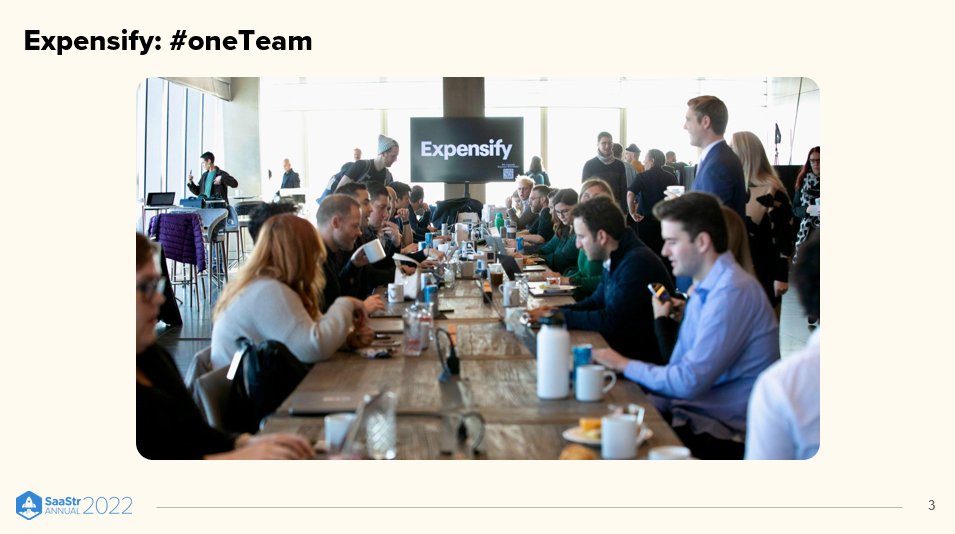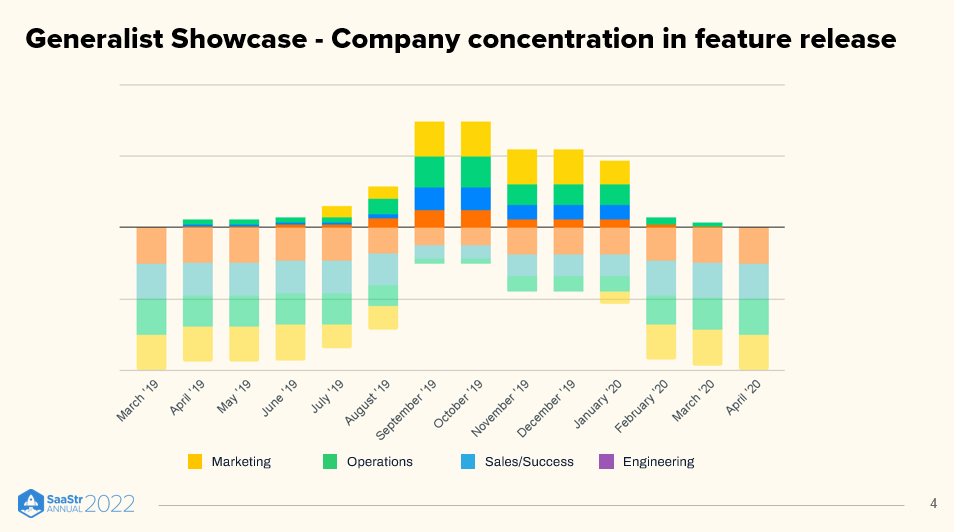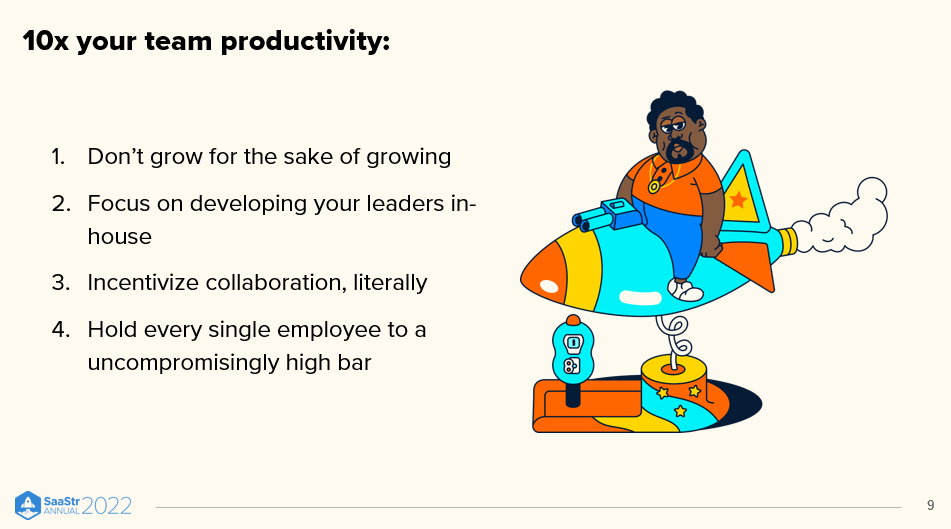What does successful company growth look like? Lots of SaaS founders are preoccupied with employee headcount as an important growth metric, but this indicator is not always true. Anu Muralidharan, COO at Expensify, says, “When a company is small, every single employee in your company is collaborating nearly perfectly with everyone else. Everyone is constantly questioning the value of what they’re doing because no one has time for busy work. So they always prioritize the most high-ROI projects, the most high-ROI tasks, and because there is a small group of people working on a multitude of things, they have a very 360-view of business strategy. So their output is also really high-functioning.”
By contrast, when a company grows larger and teams grow siloed, it becomes much harder to achieve that same level of collaboration and quality output. Based on her experience and success at Expensify, Muralidharan shares a helpful approach for growing your company that maintains productivity and performance.

Grow Mindfully: Company culture is a living, breathing thing.
When it comes to hiring strategy, you must connect your recruiting to your company’s deeper philosophy. Muralidharan says, “If your job recs and your hiring strategy is optimized to get the best person for a specific role in through the door, then what you’re going to get is a very effective cog in the wheel…If you wanted to hire “stem cells,” what you need to do is look for an X factor cohesively across all your roles.” These “stem cell” employees all work together to push the company toward its long-term goals.
As an example, Expensify includes a portion of their interview process where candidates solve a math problem on a whiteboard alongside their potential teammates. This challenge is designed to test three qualities that are part of their company X factor –– a unique combination of talent, ambition, and humility. Of course, this will look different at every company, but you must determine your X factor and test for that.
Promote Organically: Democratization of Opportunities
Another critical piece in building a highly productive team is to promote from within. Muralidharan says, “I hope all of you as leaders in your organization will grow your leaders and not buy them.”
To illustrate why this matters, consider a real example from Muralidharan’s past. At a previous startup she worked for, management was constantly interviewing people from big companies to take leadership roles. However, the constant courting of these outside candidates negatively impacted morale because it sent the signals that the current team was not able to add value, could not solve the company’s big problems, and had limited room for professional growth.
Muralidharan goes on to say, “You know what happens when your employees don’t feel very good in your organization? They do one of two things: If they were smart they make a beeline for the door. But otherwise, they would decide that this job is a nine-to-five.” So if you never invest seriously in your current workforce, they will stop investing seriously in your business.
Expensify combats this with their unique hiring strategy. Despite having a ton of leadership experience, Anu started at the bottom of the totem pole. They do not hire for leadership positions. Leaders have to grow through the company. Future directors, managers, and executives have to grow through the organizational chain and prove that they can lead.

Compensate Democratically: Managing up culture brings us all down.
Muralidharan says, “Compensation is a very powerful motivator, so if there are certain behaviors you want to incentivize, then make sure that your compensation process is kind of aligned with those behaviors.” However, many companies participate in “managing up.” Managing up is working for the benefit of you and your boss. Few incentives in this atmosphere to collaborate with everyone else.
At Expensify, every single employee gets a say in the compensation of every other employee. Ask each employee certain microdecsion questions about value, then algorithmically based on those responses determine the salary of others. This incentivizes everyone to show up and contiunue to demonstrate their value to everyone, not just political shows.

Manage Proactively: Identify fast, course correct quickly.
You will have high retention when you treat people well, and many people will be with you for years. But, in that time, things change, your company is constantly reacting to market conditions, and could be changing direction, etc. So your top players could end up becoming complacent or lose motivation, which is normal. However, when you notice this, you need to immediately course-correct and proactively address it.
You want A players to stay A players. They attract the best employees.
Key Takeaways to 10X Your Team Productivity
- Don’t grow for the sake of growing.
- Focus on developing your leaders in-house.
- Incentivize collaboration, literally.
- Hold every single employee to an uncompromisingly high bar.

